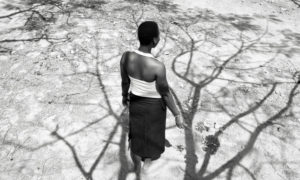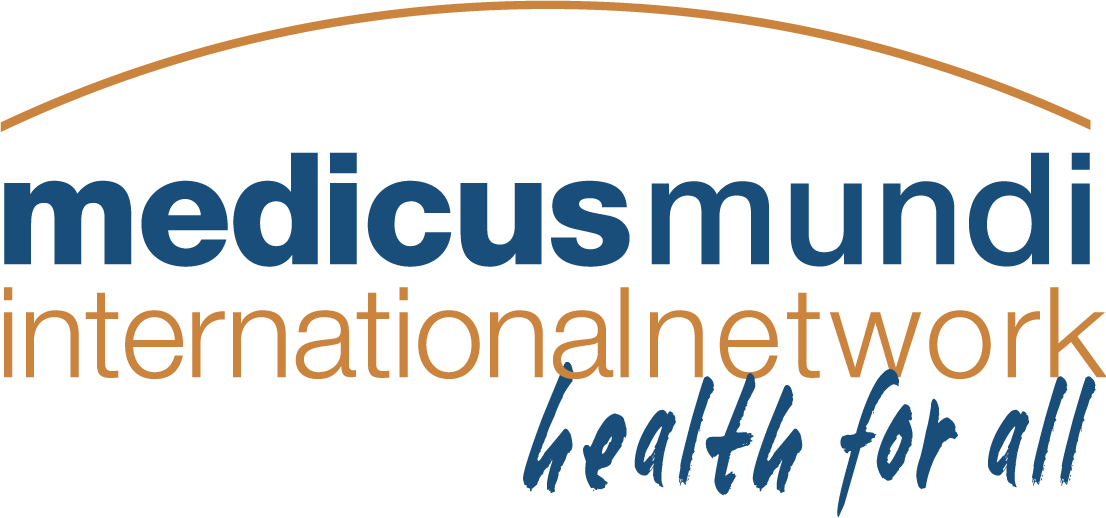
In Burkina Faso acts of violence are on the rise with increasing bloodshed and dramatic consequences for the population and those who want to help. A once exemplary peaceful country is now close to the edge of a civil war. The “orange zone”, considered “discouraged unless compelling reason”, now includes the capital city, where Medicus Mundi for 15 years had an ongoing HIV-collaboration with the Hospital of the Camillian Fathers.
In 2018, more than 200 Burkinabé, most of them policemen and soldiers, were killed in terrorist attacks. In March, in the capital Ouagadougou, a double attack hit the French Embassy and the Burkinabé army headquarter. The other attacks occurred along the border with neighbouring countries, in particular near Mali and Niger, but starting from there they stretched out deep in the country, withdrawing huge areas in the north and east from state control. In these regions, more than 600 schools had to be closed in 2018 under terrorist threat – some teachers were killed for not wearing appropriate clothes or not teaching Arab, books and buildings burned. Almost 50.000 people were displaced internally. The numbers by February 2019 increased to over 1000 schools closed and 150.000 affected students. Health facilities were also closed or reduced service (1). For this reason on New Year’s Eve the President declared emergency in 7 out of the 13 regions of Burkina Faso (2).
The roots of conflict
In the wake of the crisis in Mali, also in Burkina the idea of precolonial reigns reappears. The insurgency is fuelled by the resentment of ethnic groups – in particular the Fula people (locally called Peul), traditionally cattle breeders – who live in areas that have been forgotten by national development programs: in terms of health, these are the areas of Burkina where there are fewer health facilities and consequently the highest rates of malnutrition and child mortality.
Yet, until 2016, Burkina had been spared from the Islamic terror and the separatist movements of the Tuareg and Peul populations present in Mali and Niger: the country was brought as an example of peaceful coexistence – albeit the International Crisis Group (3) warned the government to tackle the perceived discrepancy between a significant number of Muslims and their low level of public representation. In fact, ethnic and religious tensions and conflicts were present but remained limited as long as no external intervention poured gasoline on the fire: the scarce resources of Burkina did not tempt anyone. But in recent years the poorly controlled race to the unexploited treasures buried in the Sahel soil (mostly new – rare earths – and old gold, but also new – uranium – and old oil) has build up momentum at increasing speed. After invading Chad, Mali and Niger, Chinese, Canadian, Indian, and Algerian mining companies have arrived also in Burkina Faso bringing capital (and missionaries) from Saudi Arabia, Qatar and Kuwait: so a previously ignored desert, inhabited only by shepherds (but also smugglers and traffickers of weapons, cocaine and migrants) has become the center of international economic interests and intense conflicts.
Poverty is another driving force, as every terrorist receives a salary that is higher than that of a government soldier – in addition to a flat rate for the family. The social prestige and the self-esteem associated with being a terrorist is another stimulus, especially for young, poor, angry and emarginated males. Thus recruiting fighters for the low-intensity conflict strategy is not a problem for the terrorists, while the government struggles to keep the military in active duty.
The involvement of Burkina Faso
This new “gold-rush” also involved Burkina, in short time the old “white” district of Ouagadougou – “la Zone du Bois” – has become home to dozens of foreign mining companies, whose staff goes back and forth every week from the gold, zinc and manganese mines, escorted by poorly armed Burkinabé military servicemen. Around half of the national territory is now subject to options or mining concessions. However, precolonial resentments and subsoil richness are not the only reasons why Burkina got involved in the Sahel war. Until a few years ago, it was through Burkina that the guerrillas of Mali and Niger received their arms, and it was in Burkina where its fighters, its refugees and its leaders found shelter whenever needed. In return, the Jihad and claims for territorial independence remained outside the country. This “deal” created difficulties for the governments of neighbouring Mali and Niger but generated economic benefits for Burkinabé leaders.
With the intensification of the conflict in the Sahel, and with the direct and increasingly strong commitment of France and other International forces, the new Government that took office in Burkina after the revolution at the end of 2015 would and could no longer “honour the deal”. Soon after that was evident the terrorist attacks began and kidnapping – and now killing – of Europeans, including health workers, started.
What are the military forces present
There are about 3,000 guerrilla fighters in the Sahel, belonging to various movements but united in a consortium affiliated to Al Qaeda. On the other side, 20,000 blue helmets of the UN peace mission are deployed in Mali. In addition, for the fight against terrorism, some 5,000 soldiers from France, USA, Germany, and Italy train and sustain the local military forces and bring modern equipment. But the use of armed drones against the small terrorist combat groups, that easily hide in the Savannah and its villages, is associated with significant collateral damage.
Another risk perceived during the ongoing war in the Sahel is the civil-military cooperation in support of humanitarian operations. As Barkhane is not a peace-keeping mission, but a full fletched “war” on terror, collaborating with one of the belligerent parties is ethically and practically difficult for NGOs – to say the least. While we gratefully rely on the military for emergency evacuation, a clear distinction between the identities, functions and roles of humanitarian and military actors is pivotal for a successful humanitarian work and the safety of both, humanitarian operators and their clients (4). The disastrous mingling between military operations and humanitarian aid that allowed to identify Bin Laden in Pakistan, besides undermining trust and thus vaccine use, still causes dozens of killed vaccine workers (5) – also here in Africa.
And the year 2019 started even worse
On New Year’s Day, guerrillas killed 7 inhabitants of a village of Mossi farmers, the major ethnic group in Burkina. In retaliation the Koglweogo, illegal armed groups of self-defense, attacked villages of Peul, killing at least 80 inhabitants and provoking the exodus of about 12,000 people (6). The problem thus is shifting ever more from terrorist attacks towards civil war, with rebellion, tribal conflicts and now also ethnic atrocities! Facing with the risk of an escalating ethnic conflict, the UN Secretary General addressed a message to the Burkinabé government, expressing his concern.
What does this mean for us?
Medicus Mundi Italy closely followed the changing map of Burkina Faso (7), where the “red zones” increased rapidly and now almost cover half of the country, while the orange zone, considered “discouraged unless compelling reason”, now includes the capital city, where Medicus Mundi for 15 years had an ongoing HIV-collaboration with the Hospital of the Camillian Fathers. Over 50 young doctors, most of them residents in paediatrics from the University of Brescia, served a term of 3 to 6 months on rotation there, but given the security situation, the home institution vetoed its personnel to continue to work in Burkina, effectively closing the project for security reasons.
It’s hard to depart leaving close friends to an uncertain future, but as our presence there might put the whole hospital at risk, there was no choice. At the time we write this, we still continue our other project, fighting against childhood malnutrition in 5 districts of the center-west region of Burkina Faso….
…………..
Contribution by Medicus Mundi Italy to the 2018 Annual Report of the MMI Network
Authors
Marina Martinetto, Gigi Pietra, Richard Fabian Schumacher, Medicus Mundi Italia
References
- https://www.humanitarianresponse.info/en/operations/burkina-faso
- https://thedefensepost.com/2018/12/31/burkina-faso-declares-emergency-northern-provinces/
- https://www.crisisgroup.org/africa/west-africa/burkina-faso/burkina-faso-preserving-religious-balance
- https://ec.europa.eu/echo/what/humanitarian-aid/civil-military-relations_en
- https://www.cemfi.es/~martinez-bravo/mmb/Research_files/MS_Vaccines.pdf
- https://www.humanitarianresponse.info/sites/www.humanitarianresponse.info/files/documents/files/rapport_final_mission_conjointe_devaluation_rapide_23012019.pdf
- https://www.diplomatie.gouv.fr/fr/conseils-aux-voyageurs/conseils-par-pays-destination/burkina-faso/#securite
